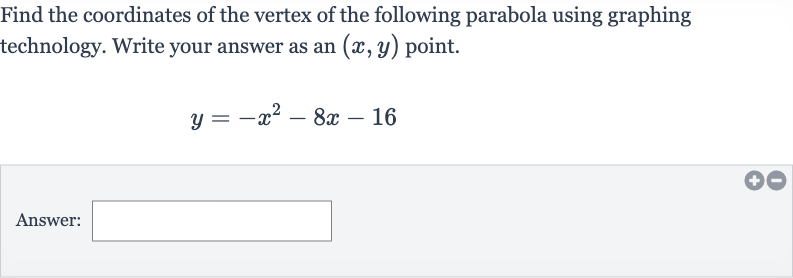Full solution
Q. Find the coordinates of the vertex of the following parabola using graphing technology. Write your answer as an point.Answer:
- Identify Vertex Form: The vertex form of a parabola is given by , where is the vertex of the parabola. To find the vertex of the given parabola, we need to complete the square to transform the equation into vertex form.
- Factor Out Coefficient: The given equation is . To complete the square, we need to factor out the coefficient of the term from the terms.
- Find Completing Number: Factoring out from the terms, we get . Now we need to find the number that completes the square for the expression .
- Add/Subtract Completing Number: To complete the square, we take half of the coefficient of , which is , and square it, which gives us . We add and subtract this number inside the parentheses to maintain equality.
- Simplify Expression: Adding and subtracting inside the parentheses, we get . This simplifies to .
- Finalize Vertex Form: Simplifying the equation, we get . Since there is no constant term outside the parentheses after completing the square, the vertex form of the equation is .
- Determine Vertex Point: The vertex of the parabola is the point from the vertex form . In our equation, and , so the vertex is .

